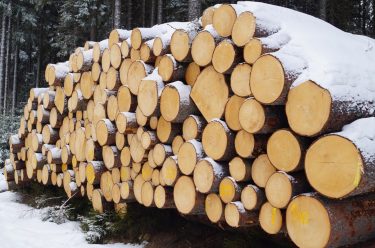Don’t Buy “Climate Change” Argument
Federal agency representatives and certainly our liberal political representatives are already touting “climate change” as the cause of this summer’s catastrophic wildfire season. They point to rising temperatures, extended drought and a lengthening fire season as the reasons for the unusually large and numerous wildfires. I am not going to debate whether the climate is changing or whether these other factors are as influential as some suggest. What I am certain of, however, is that climate influences ALL lands when, in fact, significant changes occur. Climate change does not differentiate between private, state, federal or private forest lands. I think we can agree that these influences affect all ownerships the same, can’t we?
So why aren’t the experts explaining to us why 95% of the large wildfires are on federal forest lands?
While the data changes daily, if not hourly, the State Forester has reported that approximately 672,500 acres have burned in Oregon this fire season. About 632,500 acres have burned on federal land and less than 40,000 acres on land protected by the Oregon Department of Forestry, primarily private land and forests managed by the Bureau of Land Management. Why this huge disparity if climate change is the cause of the catastrophic wildfire season?
We believe the answers are pretty simple. First, it is becoming widely accepted that 25 years of benign neglect of our federal forests is finally coming home to roost. Active management of these resources has all but stopped since the spotted owl was listed as a threatened species and the Clinton Administration turned the U.S. Forest Service upside down with the Northwest Forest Plan and other administrative actions. Second, there are few loggers actively engaged in managing federal forests. They are no longer “out in the woods.” Prior to the Clinton Administration, loggers were the first respondents to most fires on federal forest lands. They were minutes away from ignition points and performed initial attack duties. They are no longer there. Consequently, it often takes hours for initial attack resources to arrive at the scene of the fire, if they do at all. Which brings up reason number three. The “let it burn” policy is antiquated in modern society. It is irresponsible for the Forest Service to allow fires to burn unattended when neighboring properties are at risk. The Chetco Bar Fire, the Whitewater Fire and the Indian Creek Fire all started from lightning strikes in federally designated Wilderness Areas. They were left unattended for weeks and each of them blew up into major conflagrations destroying private property and other public lands. This policy needs to be reevaluated!
Finally, and this is the heavy political lift, the federal doctrine of sovereign immunity needs to be revoked. Currently, when a fire originating on federal forest lands crosses onto adjacent properties, the federal government is immune from any responsibility for damage done to its neighbors. But, if a fire originating on private land crosses onto federal land, the private landowner will be held accountable for damages to federal property. Does this sound fair to you? The playing field must be leveled. Perhaps the Forest Service would be a little more aggressive in extinguishing fires on land under its jurisdiction if it knew it would be responsible for damages inflicted on its neighbors.
Disclaimer: Articles featured on Oregon Report are the creation, responsibility and opinion of the authoring individual or organization which is featured at the top of every article.


